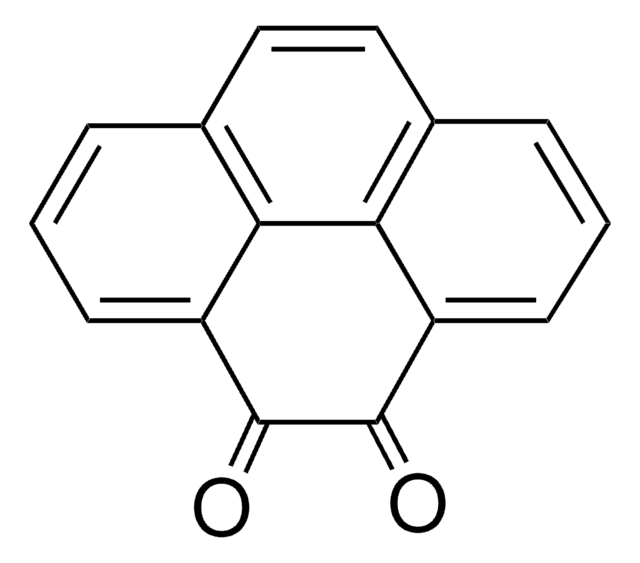Kluczowe dokumenty
346616
1,2-Naphthoquinone
97%
Synonim(y):
β-Naphthoquinone
About This Item
Polecane produkty
Próba
97%
Formularz
powder
mp
139-142 °C (dec.) (lit.)
grupa funkcyjna
ketone
ciąg SMILES
O=C1C=Cc2ccccc2C1=O
InChI
1S/C10H6O2/c11-9-6-5-7-3-1-2-4-8(7)10(9)12/h1-6H
Klucz InChI
KETQAJRQOHHATG-UHFFFAOYSA-N
informacje o genach
human ... PTPRC(5788)
Szukasz podobnych produktów? Odwiedź Przewodnik dotyczący porównywania produktów
Opis ogólny
Zastosowanie
Hasło ostrzegawcze
Warning
Zwroty wskazujące rodzaj zagrożenia
Zwroty wskazujące środki ostrożności
Klasyfikacja zagrożeń
Acute Tox. 4 Oral - Eye Irrit. 2 - Skin Irrit. 2 - STOT SE 3
Organy docelowe
Respiratory system
Kod klasy składowania
11 - Combustible Solids
Klasa zagrożenia wodnego (WGK)
WGK 3
Temperatura zapłonu (°F)
Not applicable
Temperatura zapłonu (°C)
Not applicable
Środki ochrony indywidualnej
dust mask type N95 (US), Eyeshields, Gloves
Wybierz jedną z najnowszych wersji:
Masz już ten produkt?
Dokumenty związane z niedawno zakupionymi produktami zostały zamieszczone w Bibliotece dokumentów.
Klienci oglądali również te produkty
Active Filters
Nasz zespół naukowców ma doświadczenie we wszystkich obszarach badań, w tym w naukach przyrodniczych, materiałoznawstwie, syntezie chemicznej, chromatografii, analityce i wielu innych dziedzinach.
Skontaktuj się z zespołem ds. pomocy technicznej











